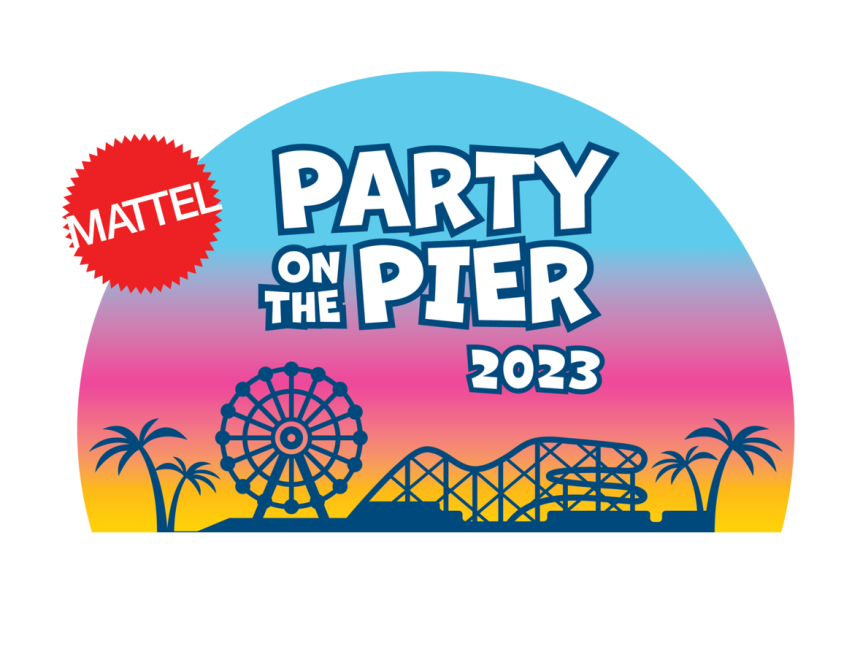Over the weekend, UCLA Mattel Children’s Hospital held its 24th annual “Party on the Pier” fundraising event at the famous Santa Monica Pier, intended to raise money that directly goes to high-priority programs for patients being treated at the hospital. For its part, venerable toymaker Mattel describes the hospital on its website as “one of the top-ranked pediatric acute care children’s hospitals in the United States” [which] “provides state-of-the-art treatment for children, conducts research that improves the understanding and treatment of pediatric diseases, and trains the next generation of leaders in pediatrics.” The hospital has gained over $30 million in funding from Mattel since 1998.
In an interview with me late last week conducted over email, UCLA’s senior director of strategic partnerships and development Danielle Dietz explained UCLA Mattel Children’s Hospital differentiates itself from similar institutions out there in its “ability to care for some of the sickest children in Los Angeles and the world.” Moreover, she told me UCLA Mattel Children’s Hospital is a teaching hospital, adding it sits “on the campus of a leading public university and renowned medical research institute [where] discovery and innovation happens every day.”
“Physician scientists at UCLA Mattel Children’s Hospital are able to accelerate groundbreaking multidisciplinary research that is translated into new treatments and therapies for patients in Los Angeles and around the world,” Dietz said of the work done at the hospital.
It doesn’t take an astrophysicist to see the dots connecting centers like UCLA Mattel Children’s Hospital to disability and technology. Many of the children who are patients have conditions which are disabling in various ways, and accessibility comes into play not only with sheerly accessing care but also for the medical personnel who are dedicated to finding solutions and providing treatment. As I often say in this column, accessibility and assistive technologies are dynamos that have relevance to all aspects of life. This is especially true living in contemporary times where technology pervades nearly all facets of daily living for all of us.
Dietz called the aforementioned Party at the Pier the “signature” annual event that brings together more than 2,000 people from a diverse collective of communities throughout Los Angeles. Guests are able to partake in a fun-filled day doing activities such as unlimited rides, chances to win Mattel toys, and much more. The proceeds garnered from the event, Dietz said, go towards providing “crucial unrestricted support for Children’s Health at UCLA” that allows the hospital and its pediatrics department to “to pivot as needed and meet its most urgent needs.”
“Party on the Pier offers children, families and all attendees a memorable day, while also making a meaningful difference,” Johnese Spisso, president of UCLA Health and CEO of the UCLA Hospital System, said in a statement provided to me. “For the past 24 years, proceeds from Party on the Pier have made a real difference in our ability to provide world-class care for children at UCLA Mattel Children’s Hospital.”
When asked why Mattel was chosen as a partner, Dietz told me the hospital’s faculty and staff all recognize how important play is to children’s growth and development, particularly during times of healing. Party at the Pier embodies this ideal, with Mattel responsible for donating all the toys for the event. The company also recruits its employees to volunteer at the event by working the game booths to hand out said toys to everybody who visits the booth, whether they win or lose.
According to Dietz, technology plays an integral role in making Party at the Pier go from conception to fruition, touching everything from pre-event planning, ticket sales, and post-event public relations. What’s more, she said “over half of our donors and sponsors” make their contributions online via the hospital’s website. At the pandemic’s height, Dietz said Party at the Pier was run virtually as a one-time event; it consisted of a 45-minute video program along with an interactive website where guests could play games, download recipes, and a virtual pier experience. All told, technology is a crucial and inextricable component to the event’s success, whether remotely or in-person.
“Being back in-person on the pier, technology is crucial to our event’s success,” Dietz said. “As a cashless event, we process all game ticket and day of event purchases. This year we also transitioned to electronic tickets allowing guests to check in through a QR code on their phone.”
As to feedback, Dietz said Party at the Pier “would not be possible without our incredible sponsors and partners.” Partners such as the Los Angeles Dodgers Foundation, the hospital’s Integrative Medicine Collaborative, and the Westside LA Ronald McDonald House Charities “help elevate all aspects of the event and enhance the experience of our guests and share our mission to better the health and well-being of children.” Dietz also was keen to emphasize the importance of the many volunteers, saying they “are key to making this event possible.” She gave a special shoutout to the Party on the Pier planning committee, co-chaired by Hillary Milken, Loris Lunsford, and the UCLA Mattel Children’s Hospital board. “They help drive fundraising efforts and are key community advocates for this event and the hospital,” Dietz said.
Looking towards the future, Dietz expressed excitement for Party and the Pier’s silver jubilee (25 years) next year. She was reticent to give away much information, but suffice it to say plans are underway to “celebrate this milestone year in a big way.” She did offer, however, next year’s event will incorporate “new activities and experiences into the event” as well as the introduction of a youth fundraising initiative.
“This [Party at the Pier] event is made possible by our generous sponsors and donors from the community, Dietz said. “Through these supporters, we are able to invite a select number of patients and families to attend the event free of charge. Over 50% of our sponsors come back every year; some being involved since the events inception.”
Read the full article here










